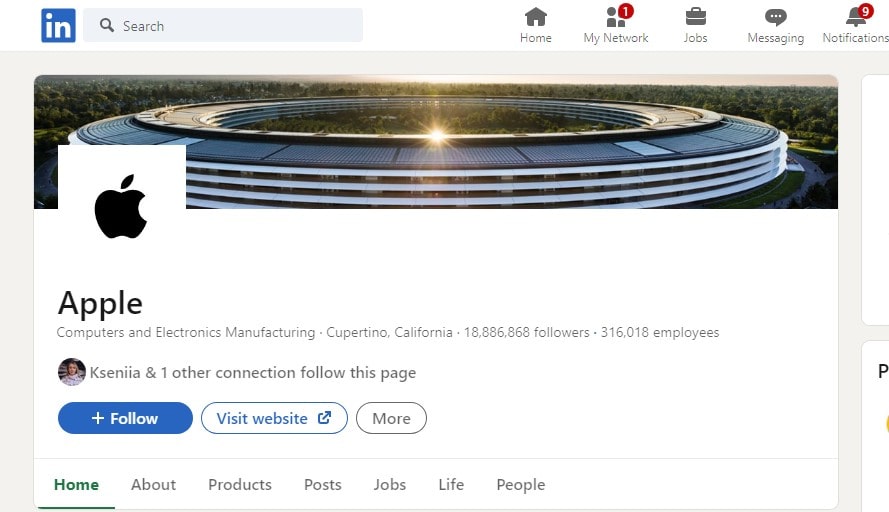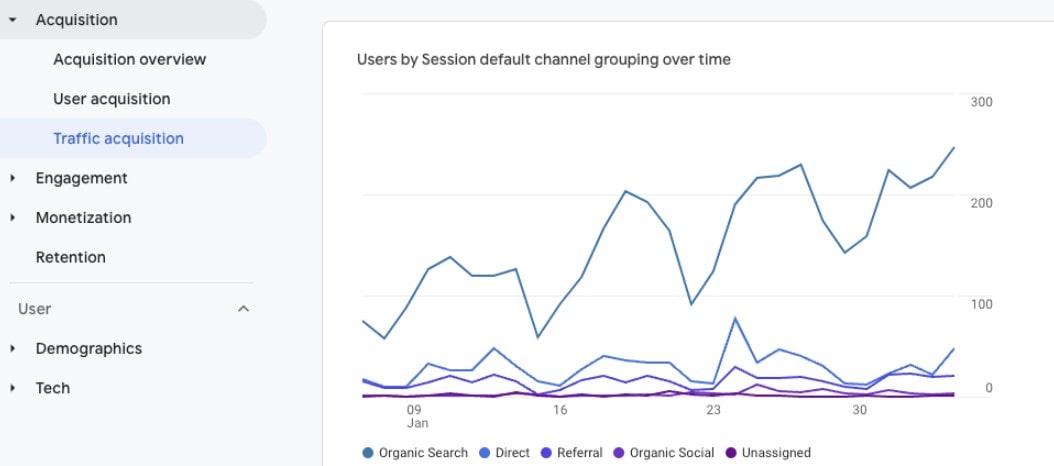In the vibrant business-to-business (B2B) marketing landscape, strategic approach and trend-adaptability hold the cards to supremacy ?. Unpacking this, the essence of B2B marketing lies not in mere transactional exchanges but in fostering deep-seated relationships and delivering top-notch solutions ?. For instance, the technology sector, where SaaS companies clinch fruitful partnerships by emphasizing the strength and reliability of their services. Or the manufacturing industry, where a compelling value proposition can lead to long-lasting, mutually beneficial ties.
- Definition: B2B marketing is the engine driving collaboration between businesses, fueling growth and innovation.
- Strategy: Today’s B2B marketing strategy is a mélange of digital and traditional means—content marketing, email campaigns, events, and PPC, fine-tuned to target specific business demographics.
- Trends in 2023: Current trends underline the significance of personalized experiences, data-driven decision-making, and AI integration in marketing automation.

Speaking of digital tools, remember to optimize your marketing efforts with Plerdy—an ingenious suite for SEO and User Experience (UX) improvement. Tap into the power of analytics, heatmaps, and pop-up forms to boost your campaign’s performance and engagement ?. B2B marketing in 2023— a whirlwind of opportunities, ready for you to dive in!
Definition of B2B Marketing
B2B marketing stands tall as the powerhouse that fuels transactions between companies. It’s not about wooing the average consumer; it’s about scoring a touchdown with businesses that are on the prowl for game-altering products and services. Visualize a cutting-edge biotech firm that’s been making waves with its genetic testing kits, exclusively targeting hospitals and clinics. That’s B2B marketing – pulling the strings, orchestrating connections, and setting the stage for business-to-business collaborations.
B2B marketing shines when it comes to:
- Precision Targeting – An AI solutions provider zeroing in on fintech companies.
- Epic Deals – Think construction companies locking horns over multi-million dollar contracts.
- Tight-Knit Partnerships – A sustainability consultancy fostering alliances with green energy startups.
- Endurance Runs – Picture the lengthy yet fulfilling courtship between industrial machinery manufacturers.
The Evolution of B2B Marketing
Let’s hit the rewind button and take a thrilling ride through the annals of B2B marketing. Back then, it was all about handshakes, phone calls, and good old-fashioned networking. Fast-forward and B2B marketing has evolved into a digital maestro.
- Early Explorations – The 70s and 80s saw B2B marketing dabble with trade shows, print ads, and direct mails.
- Dotcom Boom – The 90s heralded a digital euphoria. Email campaigns and websites were the sizzling trends.
- Social Media’s Sway – The 2000s ushered in social platforms, transforming the way businesses connect.
- Content Revolution – Enter 2010s, and content marketing became the heartbeat of B2B outreach, with webinars, e-books, and blog posts taking center stage.
- Smart Tech Takes Over – Presently, AI, big data, and automation are the buzzwords, streamlining marketing efforts and hitting the sweet spot.
The Importance of B2B Marketing in Today’s Business Landscape
In 2023, B2B marketing is the glue that binds the business ecosystem. Companies now need more than just tangible goods or services; they need a brand, a voice, and a story.
- The Ecosystem’s Lifeblood – It keeps the business ecosystem thriving. Think about a network of software developers, graphic designers, and marketers behind a successful e-commerce platform.
- Driving Growth & Innovation – With B2B marketing, companies can collaborate, sparking innovation. A VR company partnering with an educational content provider can redefine the future of learning.
- Elevating Industry Standards – Through competitions and collaborations, B2B marketing pushes industries to up their game. Consider the telecom industry, where constant evolution is essential.
- Bolstering Economies – By fostering deals and partnerships, B2B marketing contributes to economic growth. For example, international trade deals in the agricultural sector can uplift an entire country’s economy.
Core Components of B2B Marketing

1. Target Market Identification
When it comes to B2B marketing, pinpointing your target market is like finding the North Star in a sky full of possibilities. It’s about honing in on businesses that are itching for what you’ve got.
2. Hit the Bullseye with Precision
- Industry Savvy – Scope out industries where your offering makes waves. For instance, a cloud computing firm targeting fintech startups.
- Geographic Goldmines – Harvest fertile grounds; like an agri-tech company focusing on emerging markets where farming is paramount.
- Company Caliber – Cater to businesses of a particular size or revenue. Imagine an HR solutions firm focusing on mid-sized enterprises.
- Problem Solvers – Identify businesses grappling with issues your product can alleviate. A cybersecurity company could seek out e-commerce platforms hungry for data protection.
Nail your target market, and you’ll be racing down the fast lane with businesses vying for a piece of your action.
3. Product or Service Positioning
Once you’ve locked on to your targets, it’s time to carve out your niche. Positioning your product or service is like being the maestro of an orchestra, tuning the instruments so they play in perfect harmony for your audience.
Painting the Perfect Picture
- Value-Driven Vitae – Illustrate the unique value your product delivers. For instance, an AI-driven analytics tool could emphasize real-time insights that fuel decision-making.
- Competitor Contrasts – Stand out by highlighting what sets you apart. An enterprise software provider could focus on unmatched customization.
- Credibility Craft – Build trust through testimonials and case studies. Imagine a renewable energy solutions provider showcasing successful implementations in manufacturing industries.
- Problem-Solution Symphony – Position your offering as the ultimate solution to a pressing problem, like a logistics company offering same-day deliveries.
Steer your ship with precision positioning and navigate the tempestuous seas of B2B marketing.
4. Sales Channels and Distribution
You’ve got the target market; you’ve positioned your product. Now it’s time to pave the path to profits by picking the right sales channels and distribution strategies.
Launch Your Arsenal
- Direct Sales Force – Equip your arsenal with a sales team that knows your product like the back of their hand. Take, for example, a SaaS company that employs an in-house team to nurture leads.
- Partnerships & Alliances – Forge alliances that complement your offerings. A mobile app development firm could partner with a marketing agency for holistic solutions.
- E-commerce Platforms – Leverage online marketplaces to reach a broader audience. Consider how office furniture suppliers are tapping into B2B e-commerce.
- Trade Shows & Events – Engage your audience face-to-face. Think of an innovative robotics company unveiling its latest creation at a major tech expo.
With the right channels, your offering will be the hot ticket item businesses are scrambling to get their hands on.
5. Building Relationships and Networking
Imagine your B2B enterprise as a garden. Nurturing relationships and robust networking form the fertile soil and sunshine that fuel your garden’s growth.
Cultivating Your Business Bonds
- Personal Touch – Infuse interactions with authenticity. When a CRM software company sends personalized holiday cards, it bolsters the bond.
- Shared Success Stories – Showcase collaborations that created a splash. A cloud services provider could share stories of helping clients navigate digital transformation.
- Community Engagement – Active participation in industry forums or local business groups, like a fintech firm engaging in finance-related panels, keeps your ear to the ground.
Plant seeds of trust, and watch your B2B garden blossom into a veritable powerhouse.
B2B Marketing Strategies for 2023

1. Account-Based Marketing (ABM)
Enter the realm of ABM – it’s akin to tailoring an artisanal suit for each high-value client. Every stitch, every fabric choice, meticulously crafted for a perfect fit.
The Tailor’s Toolkit
- High-Value Client Identification – Like selecting premium fabric, pinpoint clients that perfectly sync with your offering. A cybersecurity firm could focus on e-commerce enterprises.
- Personalized Engagement – Custom-fit your messaging. An AI solutions provider could create tailored content for healthcare organizations.
- Performance Tracking – Use analytics to keep tabs on the suit’s fit. An ERP provider could leverage data to continually refine its approach for manufacturing clients.
With ABM, you’re not just another face in the crowd. You’re the bespoke tailor who crafts masterpieces.
2. Influencer Partnerships and Collaboration
Think of influencer partnerships as the conductor orchestrating a symphony. Every note from the influencer strikes a chord with the audience, making your B2B marketing efforts resonate.
Orchestrating the Collaboration
- Right Conductor, Right Crowd – Choose an influencer who’s revered in your domain. A renewable energy company could partner with an eco-activist with a solid following.
- Harmonized Messaging – Synchronize the notes. For instance, an edtech company and an educational influencer can create content that resonates with both their audiences.
- Mutual Benefit Concert – Create collaborations where both parties shine. A data analytics firm and a business strategist could co-author a white paper.
The conductor raises the baton, the music begins, and your B2B enterprise takes center stage.
3. Utilizing Artificial Intelligence and Automation
Rev Up the Engines of Engagement
Artificial Intelligence (AI) and automation are the pit crew that turns your B2B marketing race car into a formidable speed demon.
- Chatbots as Virtual Concierges – Deploy chatbots to serve as tireless guides for visitors on your site. A SaaS enterprise might use chatbots to help potential clients navigate its service offerings.
- Automated Email Campaigns – Infuse AI to send targeted emails at scale. Imagine a logistics company sending tailored emails to retailers, offering shipping solutions during peak seasons.
- Market Forecasting – AI can forecast trends, helping you anticipate market shifts. A medical device manufacturer could use AI to predict demands for specific products, streamlining inventory.
AI and automation don’t just rev up your engines; they’re the high-octane fuel that sets you apart in the race.
4. Personalization and Customization
Turn marketing lead into gold by mastering the twin arts of personalization and customization.
- Dynamic Content Creation – Serve different content to different audiences. An HR software company might present tailored content to different industries, such as healthcare and manufacturing.
- Custom Dashboards – Offer customizable dashboards to clients. A supply chain management solution could enable clients to tailor dashboards according to their needs.
- Client-Specific Offerings – Create unique packages for high-value clients. An enterprise cloud storage provider might offer exclusive security features for finance companies.
This alchemy doesn’t just create gold; it spawns B2B treasures that bedazzle clients.
5. Data-Driven Decision Making
Data-driven decision-making is like having a sixth sense – your marketing efforts become attuned to the whispers of the market.
- Consumer Behavior Analysis – Unravel the “why” behind consumer choices. A construction materials supplier could analyze data to understand why certain products are preferred over others.
- Predictive Analytics – Anticipate what your clients might need. A telecommunications equipment provider can analyze data to predict which companies might be expanding their networks.
- ROI Optimization – Allocate your resources with precision. A digital marketing firm could analyze campaign data to see which strategies bring in the most leads and focus on those.
Data-driven decision-making doesn’t just give you a sixth sense – it makes you the B2B marketing oracle.
6. Multi-Channel Marketing
Multi-channel marketing in B2B is akin to setting sail through the high seas, ensuring your treasure-laden ship reaches diverse ports.
- Email – The Timeless Classic: A marine equipment supplier might use email to reach out to shipbuilders, delivering custom newsletters about innovations in marine technology.
- Webinars – The Educator’s Haven: An enterprise software company might host webinars to educate potential clients on how to streamline their workflow using automation tools.
- Trade Shows – The Face-to-Face Powerhouse: An industrial machinery manufacturer attending trade shows could showcase prototypes, letting prospects get up close and personal with products.
Embrace the winds, hoist your sails, and embark on a multi-channel B2B marketing voyage that knows no bounds.
Digital Transformation in B2B Marketing

1. The Rise of Digital Marketing Platforms
In B2B marketing, digital platforms are the high-speed train that brings your message to the express lane, leaving old-fashioned tactics in the dust.
- LinkedIn – The Business Tycoon’s Playground: LinkedIn campaigns allow you to target decision-makers directly. For instance, a cyber-security company can create laser-focused campaigns for CIOs and IT managers.
- Content Marketing Platforms – The Knowledge Dispensaries: Tools like Medium allow you to share in-depth articles. A green energy company could write articles on sustainability, branding itself as an industry thought-leader.
- Google Ads – The Unstoppable Force: Pay-per-click campaigns ensure that your B2B products pop up first in Google searches. For instance, an office furniture provider could bid on keywords to grab attention from startups seeking to furnish their offices.
The express train doesn’t make pit stops; it barrels down the tracks and delivers your B2B message with unmatched speed and precision.
2. Social Media for B2B Marketing
Social media in B2B marketing is the canvas upon which you paint your brand’s masterpiece, mixing vibrant colors with deft brush strokes.
- Twitter – The Daily Newsreel: Keep your audience in the loop with bite-sized updates. A fintech company could tweet about daily trends in the finance industry.
- Facebook Groups – The Community Gatherings: Build communities around your products. A company selling 3D printers might create a group for enthusiasts to share their creations.
- Instagram Stories – The Ephemeral Excitement: Generate buzz with short-lived content. A corporate catering service could use Stories to showcase their mouth-watering dishes.
Each brush stroke on social media is an opportunity to dazzle and engage. With your palette of platforms and features, paint a B2B marketing tapestry that captivates and enchants.
3. Search Engine Optimization (SEO)
In the ocean of B2B marketing, SEO and SEM are the digital lighthouses that guide ships to the golden shores. Like a sailor expertly navigating through a storm, a B2B marketer must harness SEO and SEM to lead potential clients through the information tempest.
- SEO – The Steady Flame: A healthcare SaaS company might optimize their website with relevant keywords like “patient management software” to naturally rank higher and attract hospitals and clinics.
- SEM – The Intense Beam: A company manufacturing construction materials could utilize Google Ads to place targeted ads for architects and builders, focusing on specific regions or construction types.
With your digital lighthouse ablaze, chart the course through the tempestuous seas and guide your B2B prospects safely to the harbor.
4. B2B E-commerce Platforms
Imagine an ancient market square bustling with traders from distant lands. Now, translate that into the digital space and you’ve got B2B e-commerce platforms. These digital bazaars open up gates to a myriad of opportunities.
- Alibaba – The Silk Road Reimagined: B2B companies can source products from suppliers worldwide or even become suppliers themselves. A manufacturer of LED lights can tap into global markets.
- Amazon Business – The Digital General Store: Catering to a broad spectrum, B2B sellers from office supplies to industrial equipment can reach a massive audience.
- Faire – The Craftsman’s Workshop: Artisanal brands and craft makers can find retail partners to stock their unique products.
As a merchant in the digital marketplace, erect your stall, lay out your wares, and get ready for a tidal wave of B2B commerce that knows no borders. Seize the endless possibilities that e-commerce platforms offer in the B2B space. There are no limits to the horizons that you can reach when the digital winds are at your back.
6. Digital Advertising and Retargeting
In the B2B marketing landscape, Digital Advertising and Retargeting are akin to finding your way back to a treasure trove. It’s all about keeping your brand top-of-mind for those who’ve shown interest. Imagine a visitor browsing industrial machinery on your website but leaving without making a purchase. Retargeting swoops in, ensuring your ads seamlessly pop up on other platforms they visit. This constant, subtle reminder nudges them back to your domain. Cater to diverse preferences by:
- Running a mix of video and display ads.
- Diversifying across platforms such as LinkedIn for professionals and Facebook for a broader audience.
- Employing email campaigns for those who abandoned the shopping cart.
With Digital Advertising and Retargeting, you are the pilot steering the B2B prospects back into your orbit.
Measuring B2B Marketing Success

1. Key Performance Indicators (KPIs)
In the B2B marketing space, pinpoint precision guides strategy. Key Performance Indicators (KPIs) function as the compass – critical signs that indicate whether your ship sails on the right course. Businesses in manufacturing, for instance, might focus on:
- Lead Generation Rate
- Cost per Lead
- Sales Revenue
Another linchpin in the machinery is the Return on Investment (ROI) – a telling ratio that spills the beans on the efficiency of a campaign. Meanwhile, Customer Lifetime Value (CLV) gauges the total worth of a customer over time, vital for subscription-based services like SaaS platforms. Conversion Rates act as gatekeepers, translating leads into gold, while Client Feedback and Market Research are the treasure maps that uncover what clients crave. Master these, and your B2B marketing vessel is unstoppable.
2. Return on Investment (ROI)
Return on Investment, commonly referred to as ROI, is the ace in the B2B marketer’s deck. It’s the metric that quantifies the fruits reaped from your marketing spend. B2B marketers in software sales, for instance, often allocate hefty budgets to trade shows. Measuring ROI helps in analyzing whether these events really stack up to the investments. A positive ROI means your strategy is cooking up success, while negative ROI is a wake-up call to switch tactics.
To calculate ROI, subtract the investment cost from the net profit, divide by the investment cost, and multiply by 100. This simple formula gives you a percentage – your ROI.
Example: A cloud storage B2B marketer spends $20,000 on a trade show and nets $60,000 in sales. ROI = (($60,000 – $20,000) / $20,000) x 100 = 200%
This indicates the trade show investment was worth it.
3. Customer Lifetime Value (CLV)
Customer Lifetime Value (CLV) is your crystal ball into the profitability of a client over time. In B2B marketing, this insight is invaluable, especially in subscription-based services such as SaaS. Understanding your customers’ lifetime value empowers you to make data-driven decisions on acquisition and retention strategies.
For example, a cybersecurity B2B marketer might find that small businesses tend to upgrade security packages over time. Knowing this trend and the potential revenue it represents, the marketer can tailor packages that grow with the company, maximizing CLV.
To calculate CLV, multiply customer value by the average customer lifespan, keeping a close eye on data trends to make informed business decisions.
4. Conversion Rates
Conversion rates serve as a diagnostic tool for B2B marketing effectiveness. It’s the percentage of prospects who take a desired action, such as signing up for a newsletter, downloading a whitepaper, or making a purchase. Keeping tabs on conversion rates lets marketers in the B2B space, particularly those in high-ticket industries like manufacturing equipment, fine-tune their strategies for maximum impact.
For instance, if a heavy machinery B2B marketer observes that video demonstrations lead to a spike in inquiries, they can focus efforts on producing high-quality video content to capitalize on this trend.
Here’s how to calculate conversion rate: Conversion Rate = (Number of Conversions / Number of Visitors) x 100
Strategies to boost conversion rates:
- Optimize landing pages for clarity and ease of navigation.
- Tailor content to address specific industry pain points.
- Implement a follow-up strategy to engage prospects.
5. Client Feedback and Market Research
Gathering client feedback and engaging in market research are the linchpins of building an ironclad B2B marketing strategy. For instance, in the niche of B2B logistics solutions, it’s crucial to grasp what your clients cherish in delivery times and tracking capabilities.
Key Strategies:
- Dabble in feedback through surveys post-transaction or service.
- Sift through social media to gauge what’s buzzing.
- Fine-tune your offerings using insights from trade journals.
Insightful market research and client feedback teem with the raw materials needed to tailor services, sharpen your competitive edge, and enthrall your clientele. So, turn every stone and dive deep – your next breakthrough is waiting for you to unearth it.
Trends Shaping B2B Marketing in 2023

In 2023, B2B marketing is undergoing a metamorphosis. A potpourri of trends are morphing the landscape:
- Hyper-Personalization: Brands like Adobe are nailing it by curating content that resonates on a personal level.
- AI-Powered Analytics: Firms in the supply chain niche leverage AI to decipher market patterns and behavior, cutting through the noise.
- Sustainable Practices: B2B enterprises, especially in the fashion industry, are riding the wave of sustainability. They’re adopting eco-friendly materials and touting this commitment in their marketing.
Astute marketers must keep tabs on these trends and adapt; it’s an evolution, not a revolution.
Conclusion
In the pulsating heart of B2B marketing, strategies and trends in 2023 have undergone fascinating metamorphoses. The zeitgeist now orbits around the omnipresence of hyper-customized communication, bolstering the customer’s journey through the sales funnel. A cavalcade of digital tools such as Plerdy SEO & UX analysis tool has reimagined the way companies engage with their audiences, providing an individualized experience. The tool is instrumental in crafting a tailor-made narrative for every prospect, giving brands a chance to ignite meaningful interactions and win their customers’ loyalty.
The B2B landscape, as we tread deeper into 2023, bristles with innovative methods to leverage technology, transforming customer interactions into high-value relationships. Remember, in the über-competitive arena, staying relevant demands more than simply following trends.
Are you ready to amplify your B2B marketing prowess? Adopt Plerdy today. Experience the synergy of SEO & UX analysis that powers successful campaigns and captivates customers. Dive in, explore the unseen, and fuel your journey to B2B marketing supremacy. The digital revolution beckons. ⚡?
